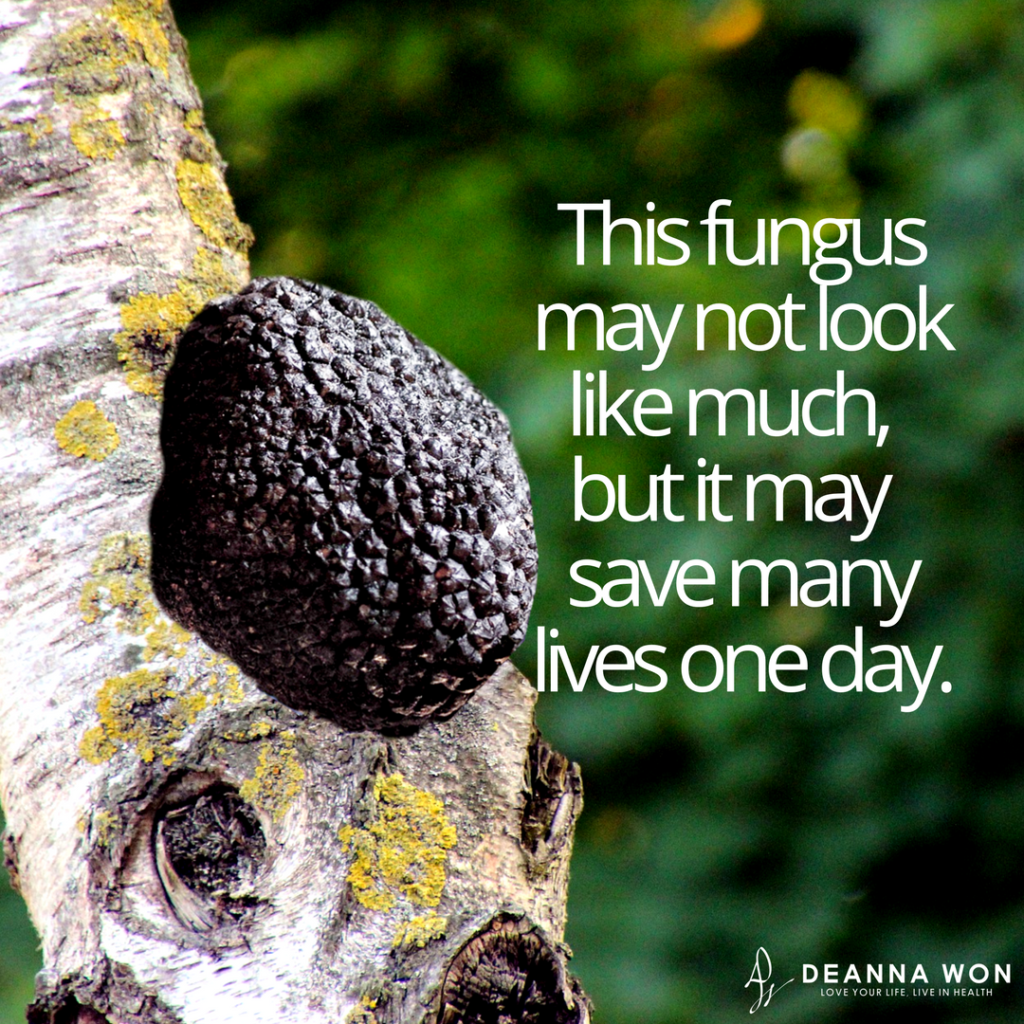The delicate taste of a mushroom is always a great addition to any meal. For those who are slowly transitioning to a meatless diet, they make a great meat replacement because of their texture and ability to soak in virtually any flavor. But mushrooms are much more than a meat substitute or recipe ingredient. They are also greatly beneficial to your health.
Despite the fact that mushrooms grow in the wild, they are not plants. Mushrooms contain no chlorophyll and are classified as fungi. Rather than using sunlight and chlorophyll to produce energy as plants do, mushrooms metabolize non-living organic matter, such as dead plants, to create the energy they need to thrive.
Some refer to mushrooms as a “hidden kingdom.” Although we may not always see them, mushrooms are very present in the soil and on wood. The body of the fungus is a network of filaments, found in or on non-living organic matter. It isn’t until these filaments produce the “fruit” or the mushroom as we know it, that the organism is visible to the naked eye.
If you’ve ever looked at a field of grass, or even your own yard after a very heavy rainfall, you may have noticed a few of these organisms that have sprouted overnight. Unlike other organisms that increase in size by cell division, mushrooms increase in size by cell expansion.
The mushroom’s cells act in the same way as a balloon. In its deflated state, the balloon is very small. As you fill the balloon with air or water, the balloon expands in size. Rainwater has the same effect on the mushroom-producing fungi. The water gets into the cells and they expand. This is why they “appear” to grow abundantly overnight.
Historically, the Chinese and Egyptians were among the first to use mushrooms medicinally. The Egyptians associated mushrooms with immortality; therefore, it was a staple in the cuisines of the Pharaoh’s family. While the Chinese did not associate mushrooms with immortality, they associated these fungi with longevity. So, what was it that they had figured out about mushrooms and health that we should know?
Mushrooms are full of nutrients. Because these organisms feed off of nonliving organic matter, they absorb many nutrients from their sources of energy. They have been proven to have antiviral properties, capable of affecting viruses like Hepatitis-C and the human immunodeficiency virus (HIV). While there are many varieties of mushrooms that are beneficial, I’d like to focus on the amazing benefits of the Chaga mushroom.
The Chaga is found in birch forests in cold climates. Unlike the puffy umbrella-like mushrooms you may be used to, the Chaga resembles a mound of burnt charcoal. This medicinal fungus grows wild on white and yellow birch trees in Russia, Korea, Eastern and Northern Europe, and parts of the US and Canada. Considered to be a superfood, this mushroom has been proven to have antioxidant, antibacterial, anti-inflammatory, and anticancer properties.
The Antioxidant Properties of the Chaga Mushroom
As we’ve discussed in previous articles how antioxidants are beneficial by balancing the free radicals present in the body, the Chaga mushroom contains a number of antioxidant properties that can protect the body from oxidative damage.
Beta-D-Glucans are polysaccharides, energy producing compounds, within the chitin walls of the Chaga that assist in the regulation of the immune system. Beta-D-Glucans improve immunity by activating the complement system, a part of the immune system that boosts the antibodies and phagocytic cells which can remove pathogens from the infected body. They also help the body in lowering LDL cholesterol and by regulating blood pressure and blood sugar levels.
Betulin and Betulinic Acid (Triterpenes) are powerful therapeutic agents. Betulinic acid has been shown to have anti-malarial, anti-inflammatory, antiviral, anti-HIV activities, and cytotoxicity against tumor cells when compared to clinical drugs. In another study, betulin lowered cholesterol, helped to prevent diet-induced obesity, and improved insulin sensitivity in the test subjects.
Melanin. Typically, when one thinks of melanin, visions of dark skin usually come to mind. Melanin is what gives the Chaga mushroom its very dark pigment. However, melanin does not only contribute to the color of the Chaga, it contains an abundance of polyphenols which allows it to act as a protective agent against UV damage, oxidative stress, inflammation and heavy metal toxicity.
As an anti-inflammatory, melanin has proven to be beneficial in reducing or preventing the progression of inflammation related diseases. In a Science Direct published study on the effects of melanin on non-alcoholic liver disease, it was concluded that “the administration of melanin can prevent development of NAFLD/NASH (non-alcoholic fatty liver disease/ nonalcoholic steatohepatitis) in rats with MSG-induced obesity and can be considered as possible novel therapeutic agents but further studies to confirm its action needed.” The administration of melanin in these test subjects helped in the reduction of visceral fat and in the restoration of anti-inflammatory cytokine levels.
Phytosterols are structurally similar to cholesterol. In the human body, they lower cholesterol absorption in the intestines. With their cholesterol-lowering effects, phytosterols may help to reduce the risk of coronary heart disease. According to the Cleveland Clinic, “The effectiveness of phytosterols is so strong that the National Cholesterol Education Program recommends people with high cholesterol consume two grams of phytosterols each day.”
Super Oxide Dismutase (SODs) refers to a group of enzymes that are present in the human cells. They aid the body in protecting it against uncontrolled oxidation and free radicals. These enzymes are important to keep the liver clean. In fact, SODs have been shown to reduce liver oxidative stress in diabetic rats.
The antibacterial properties of the Chaga
With the various antioxidant properties found in the Chaga, this power-packed mushroom can fight bacteria by disrupting how bacteria communicate with each other. Once disrupted, the bacteria aren’t able to organize in a manner that can cause harm to the host. It’s almost like trying to organize a meeting to accomplish a goal and having someone send the meeting participants different meeting times and places. If you’re not able to organize, you’re not able to set and meet your goals. By disrupting the communication of the bacteria, any significant growth of a bacteria colony is prevented. This process helps to keep ulcers and gastritis at bay.
The anti-inflammatory properties of the Chaga
In situations where inflammation becomes a chronic condition due to an overactive immune response, Chaga can reduce inflammation by slowing down or preventing the production of additional cytokines. It also decreases NF-kb, which activates an inflammatory response. When the Chaga extract was introduced to animal subjects, researchers found that it could reduce inflammation caused by ulcerative colitis. Because it has been shown to be effective in the reduction of inflammation of colon cells, it may one day serve as a viable treatment for inflammatory bowel disease.
The anti-cancer properties of the Chaga
The antioxidant beta-Glucans have been shown to exhibit anticarcinogenic activity and can thereby prevent onconogenesis. As it stimulates the immune system, beta-Glucans can slow down or prevent further tumor growth. This process can reduce tumor proliferation and prevent tumor metastasis.
Per the Memorial Sloan Kettering Cancer Center, “Extracts and constituents of Chaga have inhibitory and proapoptotic effects against colon cancer and hepatoma cells. Inotodiol from Chaga exerted antitumor effects against cervical cancer cells. In some studies, Chaga demonstrated selective apoptosis in tumor cells with no effects on healthy cells. It also reduced toxicity associated with radiation and inhibited melanoma cell growth in animal models.”
Additionally, in a study published by the National Center for Biotechnology Information (NCBI), there was an observed 60% reduction in tumor size when Chaga extract was introduced to tumor-bearing mice. In metastatic mice, nodules were reduced by 25%. These studies show promise in the future conventional treatment of cancer. However, more studies and clinical trials are needed.
How can you consume Chaga?
Because Chaga has a very hard outer layer called chitin, it is very difficult to digest this potent mushroom without undergoing the proper extraction method. I would recommend finding an organic Chaga producer that touts a relatively high ORAC value, the scale on which antioxidant levels are measured.
Chaga can be consumed as a tea or even as a coffee. If you’ve ever heard of the term “mushroom coffee,” Chaga is typically the main ingredient. It can be found as an extract or powder. As the taste is very light, the powder can be used in various beverages or sprinkled on food. If you’re a coffee drinker, consider switching from bean coffee to Chaga coffee. The antioxidant levels alone can help to prevent the onset of cellular damage.
It is best to note that precautions should be taken when using Chaga for medicinal purposes. It should not be taken in conjunction with blood thinning medications as it may inhibit blood clotting or diabetes medications as it lowers blood sugar. As most clinical trials have been completed on animal subjects or human cells, human trials are still needed to conclusively report its effectiveness on the human body.
Because the Chaga mushroom has been consumed for many years for its medicinal purposes, it has been associated with longevity because of the many health benefits that it provides. By incorporating this superfood into your diet, you may find that the potent properties of the Chaga can reduce your risk for disease and lead to improved health.
Ready to make your health a priority? Contact me here to schedule your consultation.
Sources:
http://notulaebotanicae.ro/index.php/nbha/article/viewFile/7967/7032
http://www.gmushrooms.com/info.htm
http://www.huffingtonpost.ca/2017/02/24/chaga-health-benefits_n_14941864.html
http://www.medicalmushrooms.net/
http://www.npsmelanin.com/melanin-in-food.html
http://www.sciencedirect.com/science/article/pii/S0378874112004771?via%3Dihub
http://www.sciencedirect.com/science/article/pii/S0753332216321436
https://cdn.intechopen.com/pdfs-wm/54177.pdf
https://chagahq.com/chaga-antioxidants/
https://chagahq.com/chaga-mushroom-benefits/
https://chagahq.com/harvest-chaga/
https://chagahq.com/medicinal-mushrooms-list/#tab-con-36
https://draxe.com/chaga-mushroom/
https://my.clevelandclinic.org/health/articles/phytosterols-sterols-stanols-heart-health
https://selfhacked.com/blog/top-health-benefits-chaga-mushroom/#4_Chaga_MushroomReduces_Inflammation
https://www.globalhealingcenter.com/natural-health/chaga-mushroom-the-immune-boosting-superfood/
https://www.huffingtonpost.com/nalini-chilkov/cancer-foods_b_1192207.html
https://www.ncbi.nlm.nih.gov/pmc/articles/PMC4946216/
https://www.ncbi.nlm.nih.gov/pmc/articles/PMC5302426/
https://www.ncbi.nlm.nih.gov/pubmed/15166807
https://www.ncbi.nlm.nih.gov/pubmed/17895634
https://www.sciencedaily.com/releases/2011/01/110104133901.htm
https://www.ncbi.nlm.nih.gov/pmc/articles/PMC5307326/
https://www.mskcc.org/cancer-care/integrative-medicine/herbs/chaga-mushroom
https://www.hindawi.com/journals/jdr/2011/754132/

